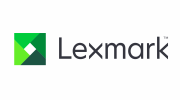Content
It could for instance automate and improve the accuracy of crucial processes such as know-your-customer (KYC), client data analysis, fraud analysis, document authentication, credit scoring, product personalization, and customer service. This in turn could significantly decrease the cost and open finance vs decentralized finance improve the efficiency of FSPs in acquiring clients and managing small-value accounts. Pension transfer processes, often complex, can be streamlined with open finance solutions. By eliminating manual steps in managing customers’ pension accounts—such as contacting pension institutions, form filling, and waiting for authorization—financial institutions can offer a smooth pension transfer experience. Real time access to customer data enables a quick overview of accounts, simplifying the transfer process, reducing costs, and increasing returns for both the bank and the consumer.
Understanding CFPB Section 1033 — Establishing Consumer Financial Data Rights in the Unite…
Open banking can also help small businesses save time through online accounting and help fraud detection companies better monitor customer accounts and identify problems sooner. Broader EU regulation could lead to greater data sharing by mandating which financial institutions and companies have to share information and how. The European Commission recently Fintech proposed an initial Financial Data Access framework. In short, the current draft enhances data access/control rights but further work is needed to refine its scope, clarity and purpose.
Open banking regulations: Understanding Section 1033

Embedded finance, simply put, is when a non-financial company offers financial products and services through APIs and platforms. Embedded finance allows companies to access and utilize financial services provided by third parties. This, in itself, is not new – consider that retail stores have https://www.xcritical.com/ offered branded credit cards for years, like Macy’s or Costco.

How does Open Finance benefit consumers?
- One of the greatest things about Open Finance is that it provides deeper insights into your overall financial health.
- Between 2015 and 2021, a number of countries enacted laws and regulations forcing traditional banks to provide API access to customer data.
- In Australia, regulation goes further — savings accounts, investment accounts and pension accounts are all in scope, with plans to include utility, telecom and travel data connections in the future.
- This could lead to more rapid consumer adoption of fintech products like real-time bank payments, BNPL, or fintech services that are still in development.
- Women typically face greater financial exclusion than men; there is indeed a six-percentage point gender gap in financial inclusion globally.
- While some jurisdictions have established comprehensive legal frameworks, others are taking a more phased or voluntary approach.
The platform enables institutions to deliver a safe and secure connectivity experience for their customers. With consumer authorized and permissioned data sharing, customers gain visibility and control over which apps and institutions access their data — enabling them to grant, manage, and revoke access at any time. Energy, telecommunications and health data are emerging as frontier sectors in which data is exposed to create new digital products and services or to provide insights and analysis for better planning and resource allocation. For example, energy data could be used alongside a customer’s bank transaction data to give a more complete picture of greenhouse gas emissions and calculate carbon tax requirements for businesses.

The European Union (EU) and the United Kingdom (UK) have emerged as pioneers in the development and implementation of open banking and open finance frameworks. While PSD2 covers payment accounts, it does not extend to other financial products. This limitation indicates the need for an expanded regulatory framework, potentially a PSD3, to encompass the whole scope of open finance. The European Commission has proposed new open finance legislation, to promote data sharing across a wider range of services. They act as the route for data to be shared securely and efficiently between financial institutions and third-party service providers. APIs enable different software systems to communicate with each other, allowing for data exchange in real-time.
They also let third parties connect customers with a view of their Capital One accounts and transactions via tokens rather than credentials. In addition, Capital One gives third parties the ability to create accounts directly within these third-party products. It’s important to note that as Open Finance encompasses a wider range of financial data and services, it may involve additional regulatory considerations.
You can use investment advisory platforms to make smarter investment decisions, compare insurance options to find the best coverage, and even aggregate your loans to simplify your repayments. Additionally, Open Finance can prioritize securing your digital wallet, ensuring the safety and protection of your financial information and transactions. Basically, it is a system that lets financial service providers access and utilize banking information, like customers’ transactions and account details, if they give them permission.
That’s because open finance has the potential to encompass all financial data and transform the way consumers and businesses use financial services in the process. With open finance, finding clients and turning them into customers becomes far more efficient. At the same time, it affords consumers the opportunity to exercise choice in how they access, use and engage with tools and services best suited to improve their financial well-being. This means that people can have a safe channel to easily share their banking information with other companies. Thanks to it – always with each individual’s consent–, these companies can use banking data to build new financial products and services that are linked to users’ banking accounts and that are more tailored to their specific financial situation and needs.
Taking corrective measures to make systems inclusive ex-post can be more challenging and costly. This underscores the need to act now to design open finance regimes that are inclusive. By expanding on PSD2 and extending open banking principles to more financial products, open finance could be here much faster than you may think. It’s one of the most important ways that open banking can evolve and work in practice. Using the very same APIs, banks can embed their products into other platforms – known as Banking-as-a-Service, or BaaS. While hacks and attacks remain a risk, fintech are working every day to prevent them.
This process is about giving customers the power to make smarter financial decisions and access a wider range of services that suit their needs. So, basically, Open Banking is an important tool for a more connected and personalized financial experience. Early evidence supports the promise that open finance helps FSPs to better serve customers in emerging markets. Open finance is still in its early days, so the use cases that have been implemented remain limited. However, the potential can be inferred from existing successes, powered by similar (but more limited) data sets than a full-fledge open finance scheme would allow. There is indeed evidence emerging from the implementation of open finance in Brazil and India.
These challenges no longer have to hold you back from moving toward open adoption. With Moneyhub APIs, you can build a secure, compliant, high-quality data ecosystem that can enrich and categorise. Our solutions for Open Banking, Open Finance and Open Data enable businesses to transform data into personalised digital experiences. It’s customer-consent-centric, which means the data is authenticated and validated. Ultimately, it’s a win-win for all because access to more information drives better financial decisions.
These are usually online portals provided by banks for consumers’ own bank accounts. However, they can also be third-party apps or pull data from other types of payment accounts (think prepaid cards or fully digital bank accounts). Regardless, the aim is to help customers better understand their financial health. Data Access is an open API platform built on FDX standards that improves time-to-market and reduces costs to deliver secure data sharing, as well as provide the groundwork for greater insights about customer behaviors, trends, and needs. It provides financial institutions with the ability to monitor and manage where consumers are sharing their financial data and the tools to implement a more secure data-sharing experience with token-based connectivity. MX is making it easier than ever for financial institutions of all sizes to accelerate open finance adoption and enhance the money experience for consumers through Data Access.
Across Europe Brite’s Data Solutions are enabling innovative financial products from customer onboarding at the same time as a payment, to simplifying EV charging payments. Get in touch with one of our open banking experts today to learn how we can help you prepare for the opportunities of open finance. One thing we can say for sure is that it’s an exciting time for businesses and consumers alike to explore new innovations in financial services.
However, open banking access enables the financial industry to move away from this legacy technology that’s overly reliant on consumer credentials and move to a new paradigm of connectivity that’s reliant upon API and tokens. Based on an open standard for authentication (OAuth), this new data access method allows the consumer to sign in directly on their financial institution’s site to provide consent for sharing their financial data. These open banking practices are rooted in the financial institutions’ established, highly secure technology programs, providing another layer of security. Open finance has the potential to increase competition and innovation in the financial services industry by fostering a more interconnected and consumer-centric marketplace.






















